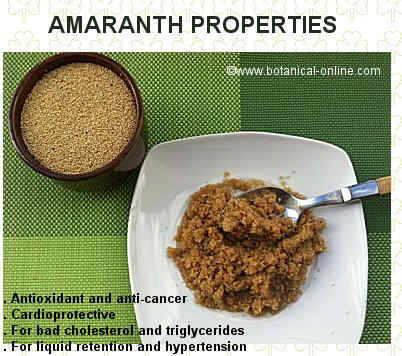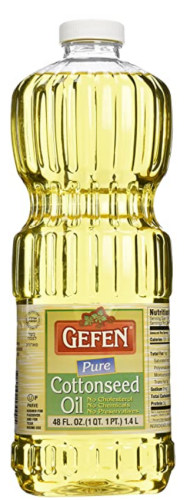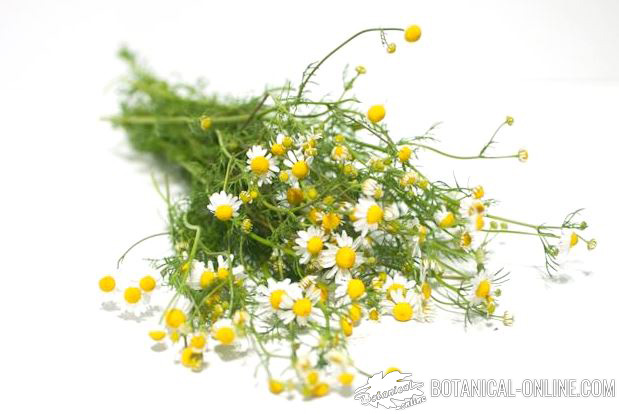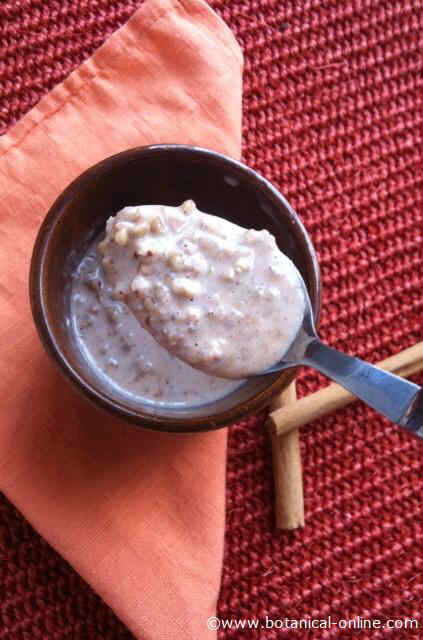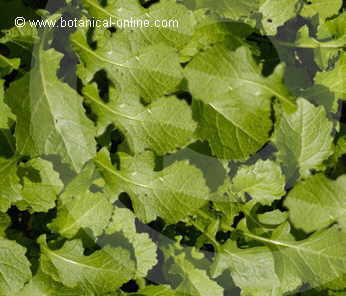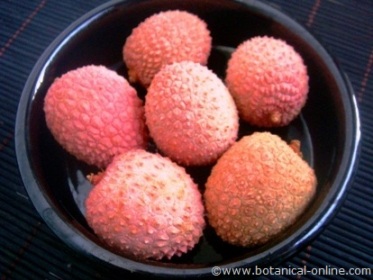Types of edible roots and their properties
What are edible roots?
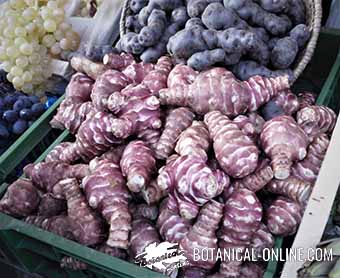
We know as plants with edible roots those that produce thickenings in their roots that lengthen or become much rounded to end in a long and narrow filament.
The thickened root is used by the plant as a resource to elaborate its external growth and for the production of flowers and fruits.
Plants with edible roots characteristics
Most of these plants are biennial, that is, their life cycle occurs in two seasons.
During the first year, the energies of the plant are focused on the thickening of the root, where they accumulate reserve substances. The aerial part of these plants is generally formed by a basal rosette with more or less divided leaves.
In the second year, the leaves die and these plants, taking advantage of the resources stored in the root, develop the external stems where the new leaves, generally smaller, are born, and the flowers from which the fruits and seeds necessary to develop the birth of new specimens.
Types of edible roots
There are numerous edible wild plants whose roots can be eaten, constituting a survival resource when necessary. However, we will refer here to those plants grown for the nutritional properties of their roots that can be easily found in the main fruit and vegetable establishments or that can be easily planted in our orchard or garden.
Among the main edible roots we have two different types:
- Edible taproots: A taproot is a type of root consisting of a main thick root from which other much more thin roots grow laterally. They can present different forms ( conical or widest at the top; fusiform or widest in the middle; or napiform or similar to a spinning top ) A carrot is the perfect example of an edible taproot.
- Edible tuberous roots: A tuberous root is a lateral root which becomes thick to store nutrients. Plants with tuberous roots generally produce numerous thickened parts in the same plant, so they differ a lot from taproots. As one example of taproots we have the sweet potato. On the other hand, they can resemble a lot to stem roots, such as potatoes, but they form part of the root and not of the stem, such as potatoes do.
Main edible taproots
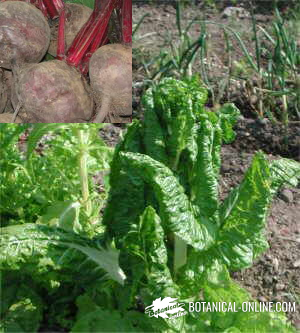
They are characterized by being plants that grow for two seasons (biennial). During the first year, the energies of the beet plant are focused on the production of the root, which is rounded and red in color.
On the outside, the reddish stems and dark green leaves with very prominent venation of the same color are born.
In the second season the highest growth of the outer part occurs at the expense of the root that gives rise to the spiky stems with the flowers.
The root is normally extracted after the first season to be used as food, forage, food coloring or sugar production. It belongs to the family of the Chenopodiaceae.
There are several varieties:
- Beets (Beta vulgaris var. Crassa) which is used for the production of table beets
- Chard (Beta vulgaris var. Cicla) that is mainly used for the consumption of the leaves, although in the past only the roots were eaten
- Sugar beets (Beta vulgaris var. Vulgaris)
- Forage beets: to feed animals (Beta vulgaris macrohiza)
Carrots (Daucus carota)
Characterized by their longer and orange roots, although white or purple varieties can be found more rarely.
Like beets, they are biennial plants that develop roots in the first year as a reserve to build a stem up to a meter and a half in height in the second, crowned with the greenish-yellow flowers gathered in umbels.
However, the roots are picked tender in the first year, before they become fibrous, when the plant shows externally a sprig of leaves that are very divided and of low height. They belong to the family of the Umbelliferae or Apiaceae
* More information on carrot
Parsnips (Pastinaca sativa)
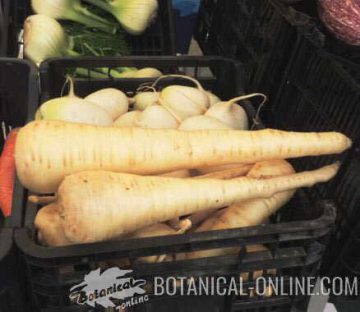
Parsnips are very similar to carrots and, like these, belong to the same family.
They also have a thickened root, although it is more whitish in color and has a very prominent odor. The root is edible, although very spicy, so it is recommended to eat it cooked.
The cultivated parsnips are varieties obtained from the wild parsnip (Pastinaca sativa subs sylvestris) with which it differs in that the wild variety has hairier stems, is smaller and its roots are not as thick.
Wild varieties grow practically throughout Europe along the roads, paths, next to wet ditches or among grasses.
In the wild its appearance is very similar to hemlock (Conium maculatum), a very toxic plant from the same family. Be careful if you intend to collect some wild variety of parsnip so as not to confuse it with hemlock.
* More information on parsnips.
Turnips (Brassica)
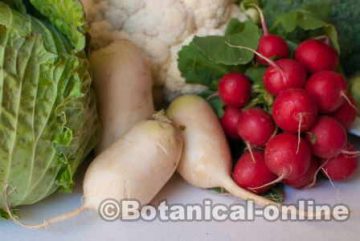
There are several species grouped into two groups: the group of true turnips and the group of rutabagas.
True turnips (Brassica napus) have rounded thickened white or purple roots. The leaves, very divided and large, have hairs on the ribs that are very prominent. These leaves are tender and edible and are known by turnip greens. Turnips have been cultivated since ancient times in the temperate zones of Europe.
Rutabagas (Brassica X napobrassica) They are very similar to turnips, although the leaves are smoother and brighter and the roots have yellow or white flesh. This species was formed from a crossing of turnips with cabbages (Brassica oleracea).They are grown mainly in the coldest areas of Europe.
Turnips and rutabagas belong to the Cruciferous family. All of them are biennial plants that lose their leaves in the second year, period in which, if the root is not collected, they take advantage to develop an outer stem with the yellow flowers and fruits.
* More information on turnips.
Rapeseed (Brassica rapa silvestris)
Rapeseed is mainly used for animal feed and for obtaining rapeseed oil. Rapeseed, when grown wild in the field, contains a very high level of erucic acid which is poisonous when taken in a certain amount.
The varieties obtained in Canada, known as canola, are practically free of this toxic and are the ones used to obtain this oil.
Radishes (Rhaphanus sativus)
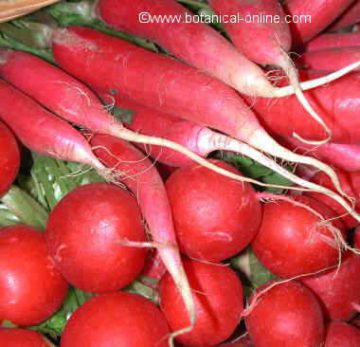
They have white, yellow, purple or black roots that are collected during the first season. Depending on the time they are harvested, the size, shape and texture of the root change.
Thus, those that are collected in autumn are the largest and hardest and must be cooked to make them soft, while those that are collected in spring or summer are tender and are normally eaten raw. Spring turnips tend to have a more rounded shape, while summer or fall turnips are more elongated.
All of them have a spicy flavor, when eaten raw in a salad. Turnips have woody stems and lobed leaves, and become rough and hairy as the plant grows.
From a nutritional point of view, radishes are the greatest antiscorbutic remedy, the reason is in the large amount of vitamin C and some anticancer compounds called glucosinolates.
* More information on radishes.
Horse radishes (Armoracia lapathifolia)
They have a very long and narrow thickened root that can reach 60 cm in length and 5 cm in diameter. This root, once dry and ground, is used to make a spice used to flavor dishes, mainly fish and meat. It is also part of the composition of mustard.
It is also known for its uses as one of the medicinal herbs, to treat abnormalities of the digestive and respiratory systems, as well as for the natural treatment of pain caused by arthritis.
It has a very spicy flavor is due to the presence of a component called sinigrine that is broken down by the action of an enzyme called myrosine producing a very pungent oil.
Other edible taproots
There are other plants that also produce edible roots in the form of taproots. They are usually wild plants or their cultivation is not so widespread. For example:
- Black salsify or Spanish salsify (Scorzonera hispanica): It is sometimes cultivated because of its long and narrow black-skinned edible taproot. It can attain 1 meter long and 1 cm wide, providing a black meat, rich in inulin, which makes it very suitable for people with diabetes.
- Common salsify (Trapopogon porrifolius): Also cultivated or wild. Root and shoots are edible once cooked.
- Skirret (Sium sisarum): Widely used by Romans and during the Middle ages, it can be used in the same way than carrots, being very sweet and aromatic. You’d better use winter root, the season when it is more tender and less fibrous.
- Dandelion (Taraxacum officinale) Although we generally use it as a medicinal plant, dandelion is an edible wild plant. People generally eat its leaves, but we can also eat its flowers or roots. Young roots can be boiled to be eaten and old roots can be roasted to make a coffee substitute.
- Maca (Lepidium meyenii) Although maca taproot is generally dried to be consumed as a medicinal supplement, it can also be consumed once boiled
Differences between taproots and tuberous roots
Although both of them are types of roots, they are very different:
- Taproots are formed by a main thick root from whom some other lateral very much thinner roots grow. For example the edible root of a carrot.
- Tuberous roots do not form a single thick root but several bulgings growing from other thinner roots.
![]() More information on edible roots
More information on edible roots
31 August, 2024

